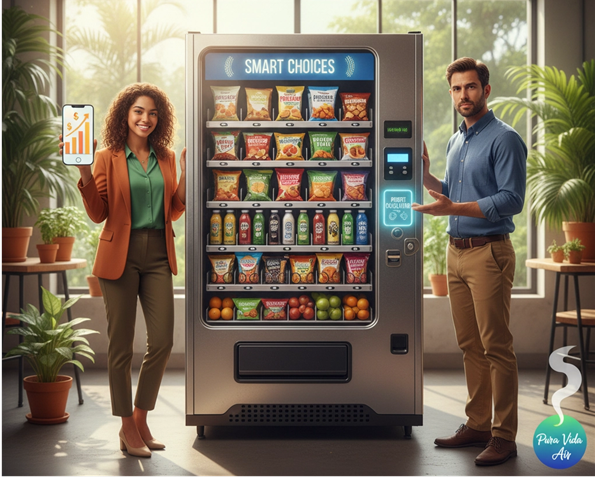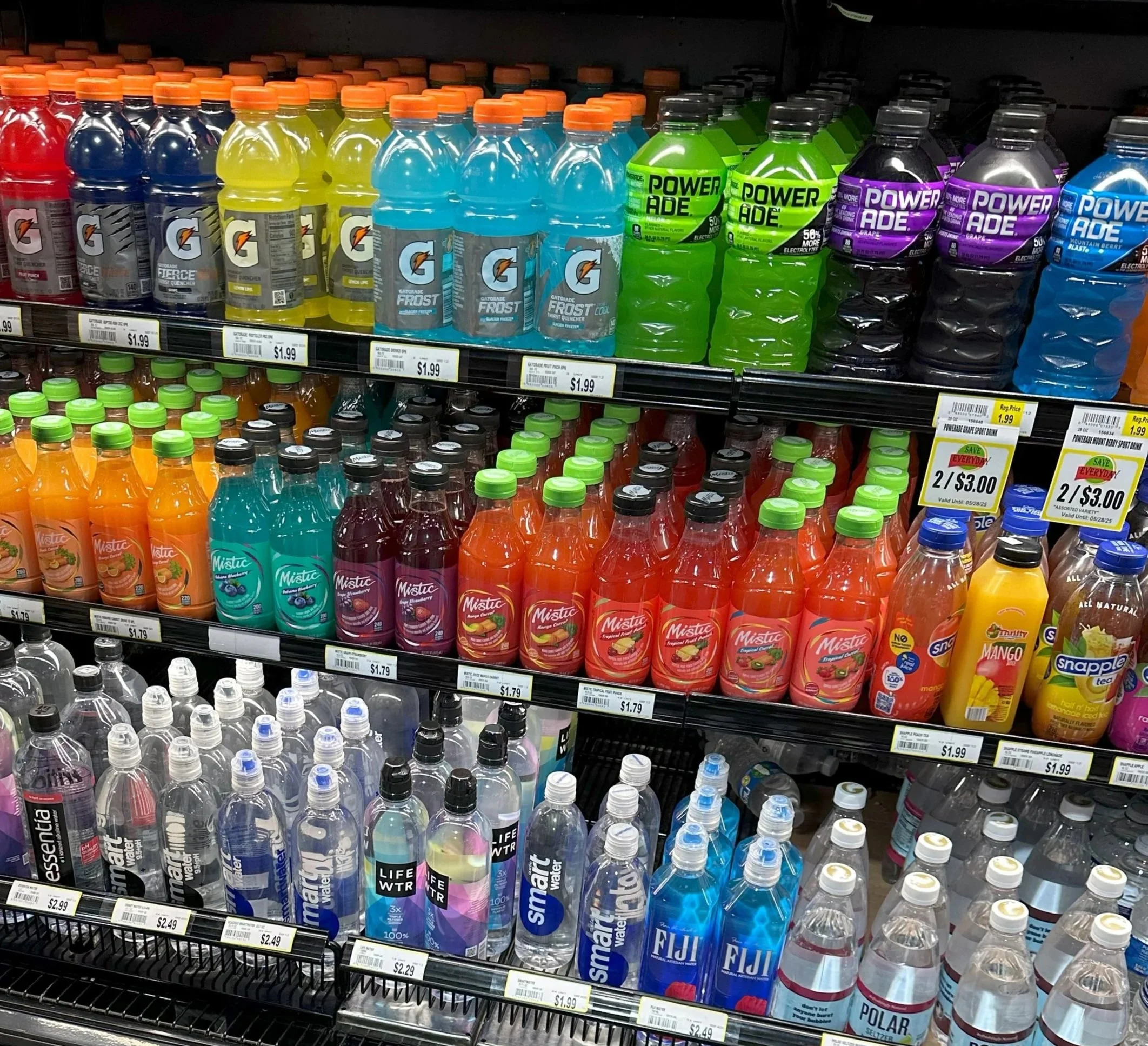Smart Pricing for Hungry Go-Getters: Mastering Vending Machine Profits Without Selling Yourself Short
Look, fellow hustler, let's get real about something that's been keeping you up at night (besides that third espresso): pricing your vending machine products like the savvy entrepreneur you are.
You didn't get into this game to race to the bottom, selling dollar sodas while your bank account weeps softly in the corner.
Here's the thing about pricing that nobody tells you upfront, it's part art, part science, and entirely about knowing your worth. Whether you're Maria, who just installed her first machine outside a tech startup in Austin, or James, who's building his fifth location near a busy downtown hospital in Chicago, the fundamentals remain the same: price smart, not cheap.
The Great Price Investigation: Know Your Battlefield
Before you slap any price tags on your delicious wares, you need to become a pricing detective. I'm talking full Sherlock Holmes mode here, minus the pipe, plus a smartphone and comfortable walking shoes.
Your mission? Scout every competitor within a three-block radius.
Sarah from Denver learned this lesson the hard way. She priced her energy drinks at $1.50, thinking she was being competitive. Turns out, the fancy office building next door was happily paying $2.75 for the same exact brands from a competitor's machine. That's not just leaving money on the table, that's setting the table, serving a four-course meal, and walking away without taking a bite.
Start by mapping out your competition like you're planning the world's most boring treasure hunt:
What are they charging for similar products?
Which items seem to fly off their shelves?
Are there price gaps you can intelligently fill?
What's the highest price you've seen someone actually pay?
Pro tip: Don't just look at other vending machines. Check the nearby convenience stores, cafeterias, and coffee shops too. Your customers aren't just comparing you to other vending machines, they're weighing you against all their snacking options.
The "Don't Be a Price Warrior" Principle
Here's where a lot of ambitious entrepreneurs go wrong: they see a competitor charging $2.00 for chips and think, "I'll crush them with $1.50!"
Stop right there, price warrior.
Undercutting by 50+ cents isn't strategy, it's self-sabotage with a business plan attached. Your customers aren't necessarily looking for the cheapest option; they're looking for the most convenient option that feels fair.
Take Marcus, who owns three machines in Atlanta office buildings. He discovered that pricing his granola bars just 25 cents below competitors created the perfect sweet spot. Customers felt like they were getting a deal without Marcus feeling like he needed a side hustle to pay his rent.
The magic formula? Position yourself 10-20% below premium competitors, not 50% below everyone.
Remember: your vending machine isn't just selling snacks – it's selling convenience, speed, and the luxury of not having to drive anywhere. That's worth something, and your pricing should reflect it.
The Golden Rule: Easier Down Than Up
Picture this nightmare scenario: You've been selling your sodas for $1.25 for six months. Business is good, but your margins are thinner than gas station toilet paper. You decide to bump prices to $1.50.
Cue the customer revolt.
Suddenly, your regulars are giving your machine the stink eye like it personally offended their ancestors. That 25-cent increase feels like highway robbery to people who've grown accustomed to your old prices.
This is why starting higher is always the smarter play.
Lisa from Portland calls it the "Price Gravity Theory", prices naturally want to fall, but making them rise requires the business equivalent of a rocket ship. She launched her machine with premium pricing and then strategically offered "grand opening specials" that felt like gifts rather than permanent price cuts.
Here's your action plan:
Research thoroughly and price at the higher end of reasonable
Test customer response for the first month
Adjust downward if necessary (customers love surprise savings)
Never adjust upward unless you're adding significant value
Know Your Hungry Customers (They're Not All the Same)
This is where the real entrepreneurial magic happens. Your 6 AM coffee-craving nurse has completely different needs and price sensitivity than your 3 PM snack-seeking software developer.
Location tells you everything about pricing power.
Corporate offices? These folks expense half their snacks anyway and value time over savings. Price accordingly.
Community colleges? Students are counting quarters, but they'll splurge on specific items they really want. Know which products hit their emotional triggers.
Hospitals? Healthcare workers on 12-hour shifts will pay premium prices for quality fuel. They're literally saving lives, they deserve good snacks and they know it.
The Customer Avatar Exercise:
For each location, create a mental picture of your typical customer:
What time do they buy?
What's their rush level?
How price-sensitive are they really?
What problems are they solving with your products?
That busy executive grabbing an energy drink at 2 PM isn't just buying caffeine, she's buying the ability to power through her afternoon meetings. That's worth more than the corner store price, and she knows it.
Dynamic Pricing: Your Secret Weapon
Smart vending machines aren't just changing what you sell, they're revolutionizing how you price. Think surge pricing for snacks, but way more sophisticated and customer-friendly.
Time-based pricing is your friend:
Premium breakfast items at higher morning prices
Afternoon energy boosts during the 2-4 PM slump
Late-night study fuel for the college crowd
The key is making it feel natural, not manipulative. Nobody likes feeling played, but everyone understands supply and demand.
Bundle Magic: Making Everyone Feel Smart
Want to increase your average transaction without anyone feeling gouged? Master the art of the bundle deal.
"Buy any drink, get chips for $1" isn't just a promotion, it's psychology in action. Your customer feels smart for "saving money" while you just increased your sale from $2 to $3. Everyone wins, and nobody feels like they got played.
Popular bundle strategies:
Lunch combos (sandwich + drink + chips)
Study fuel packages (energy drink + protein bar)
Morning starter packs (coffee + pastry)
Healthy choice combos (water + nuts + fruit)
The Premium Product Opportunity
Here's something most vending entrepreneurs miss: there's serious money in being the fancy option. While everyone else races to the bottom with generic sodas and stale chips, you can own the premium market.
Stock organic snacks, craft sodas, protein bars that actually taste good, and coffee that doesn't make people question their life choices. Price them accordingly, and watch the magic happen.
Premium doesn't mean expensive – it means worth it.
Reading the Market Signals
Your vending machine is basically a 24/7 market research laboratory. Pay attention to what it's telling you:
Fast sellers at current prices? You probably left money on the table
Slow movers that eventually sell? Perfect price point
Items that never move? Either wrong product or wrong price (probably both)
Track everything. Which products sell out first? What time of day sees the most action? Which items consistently get passed over despite being competitively priced?
This data is gold, and it's telling you exactly how to optimize your pricing strategy.
Your Next Move
Ready to stop playing small with your pricing? Here's your action plan:
Scout your competition (seriously, this weekend)
Map your customer avatars for each location
Price 10-15% below premium competitors, not rock bottom
Test and adjust downward if needed (never upward)
Track everything like the data-driven entrepreneur you are
Remember: you're not just selling snacks from a metal box. You're providing convenience, solving problems, and making people's days a little easier. That service has value, and your pricing should reflect it.
Your customers want to pay for quality and convenience, your job is to make sure they feel good about it. Price smart, not cheap, and watch your vending machine empire grow from side hustle to serious business.
Now stop second-guessing yourself and go claim the profits you deserve. Your future self (and your bank account) will thank you.
Ready to level up your vending game? Check out more entrepreneur-focused insights on our blog – because successful vending is about way more than just feeding hungry people (though that part's pretty great too).





